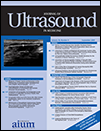Ultrasound Guidance Versus Electrical Stimulation for Infraclavicular Brachial Plexus Perineural Catheter Insertion
Abstract
Objective. Electrical stimulation (ES)- and ultrasound-guided placement techniques have been described for infraclavicular brachial plexus perineural catheters but to our knowledge have never been previously compared in a randomized fashion, leaving the optimal method undetermined. We tested the hypothesis that infraclavicular catheters placed via ultrasound guidance alone require less time for placement and produce equivalent results compared with catheters placed solely via ES. Methods. Preoperatively, patients receiving an infraclavicular perineural catheter for distal upper extremity surgery were randomly assigned to either ES with a stimulating catheter or ultrasound guidance with a nonstimulating catheter. The primary outcome was the catheter insertion duration (minutes) starting when the ultrasound transducer (ultrasound group) or catheter placement needle (stimulation group) first touched the patient and ending when the catheter placement needle was removed after catheter insertion. Results. Perineural catheters placed with ultrasound guidance took a median (10th–90th percentile) of 9.0 (6.0–13.2) minutes compared with 15.0 (4.9–30.0) minutes for stimulation (P < .01). All ultrasound-guided catheters were successfully placed according to the protocol (n = 20) versus 70% in the stimulation group (n = 20; P < .01). All ultrasound-guided catheters resulted in a successful surgical block, whereas 2 catheters placed by stimulation failed to result in surgical anesthesia. Six catheters (30%) placed via stimulation resulted in vascular punctures compared with none in the ultrasound group (P < .01). Procedure-related pain scores were similar between groups (P = .34). Conclusions. Placement of infraclavicular perineural catheters takes less time, is more often successful, and results in fewer inadvertent vascular punctures when using ultrasound guidance compared with ES.




